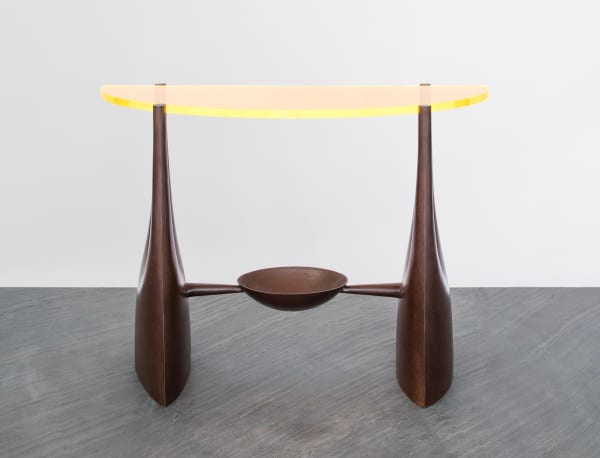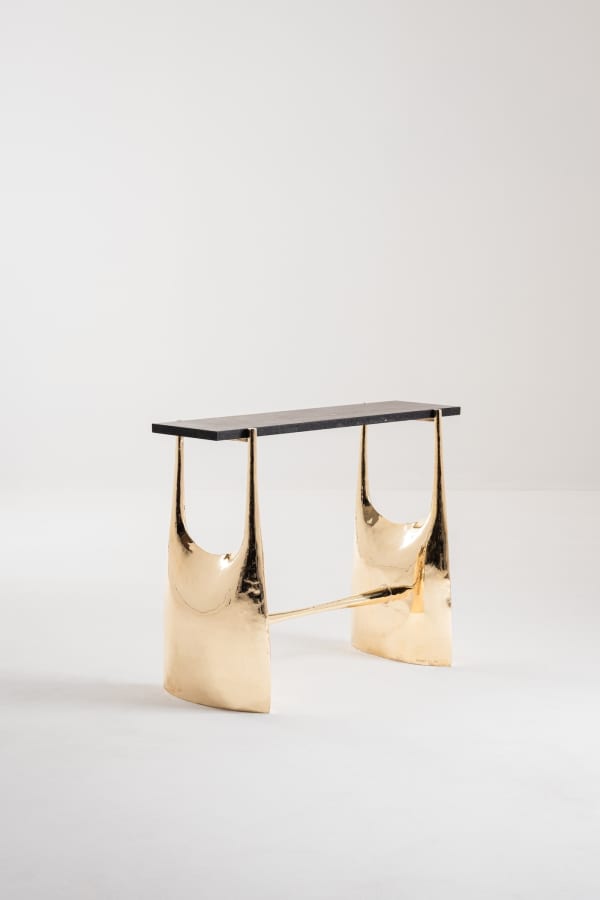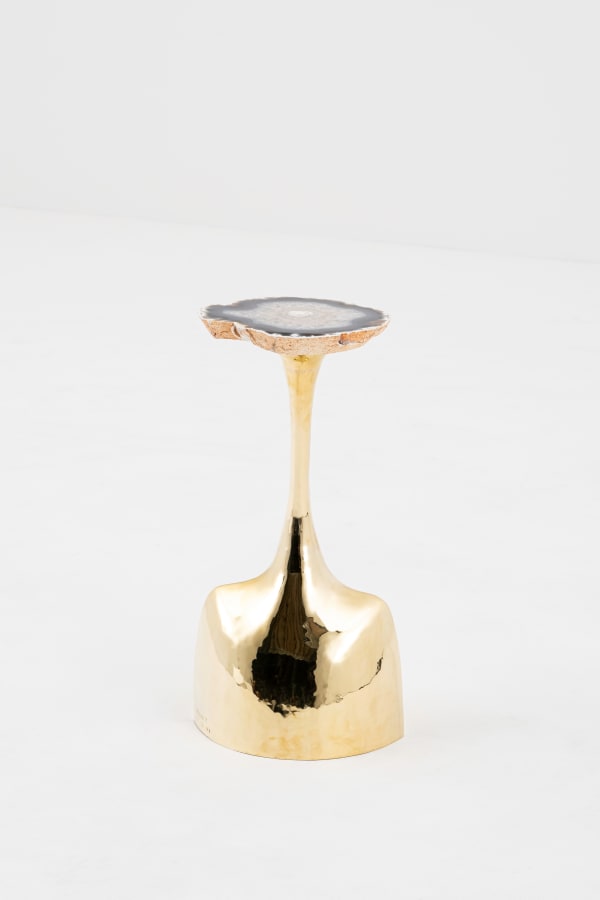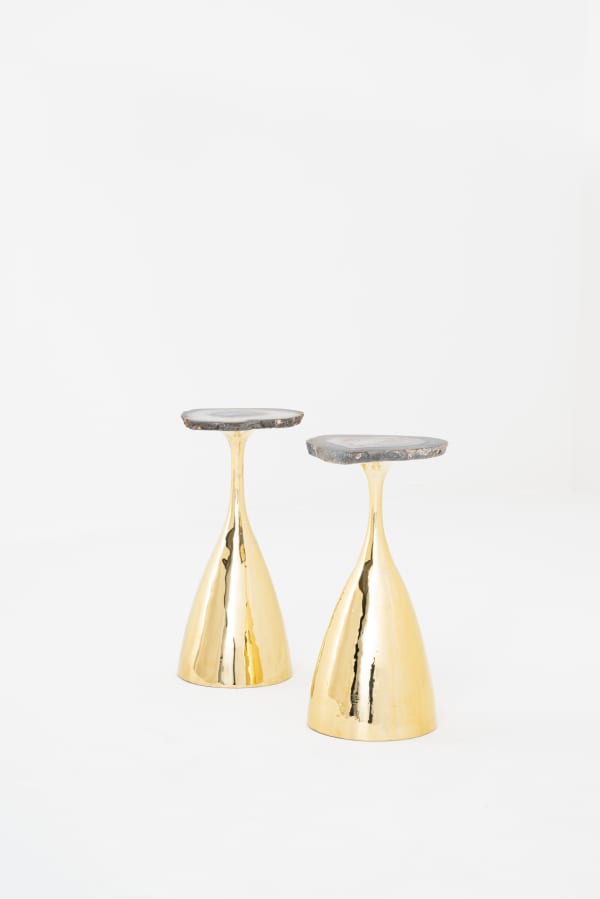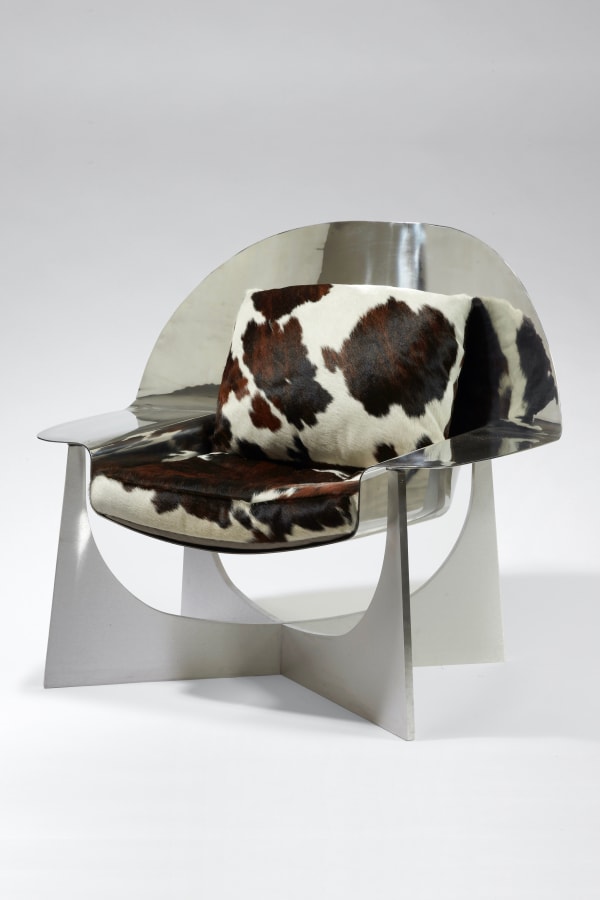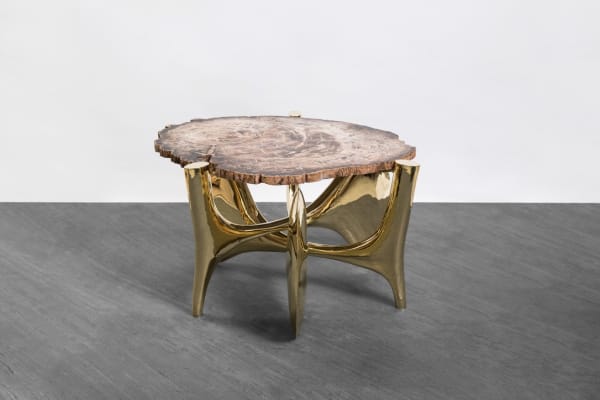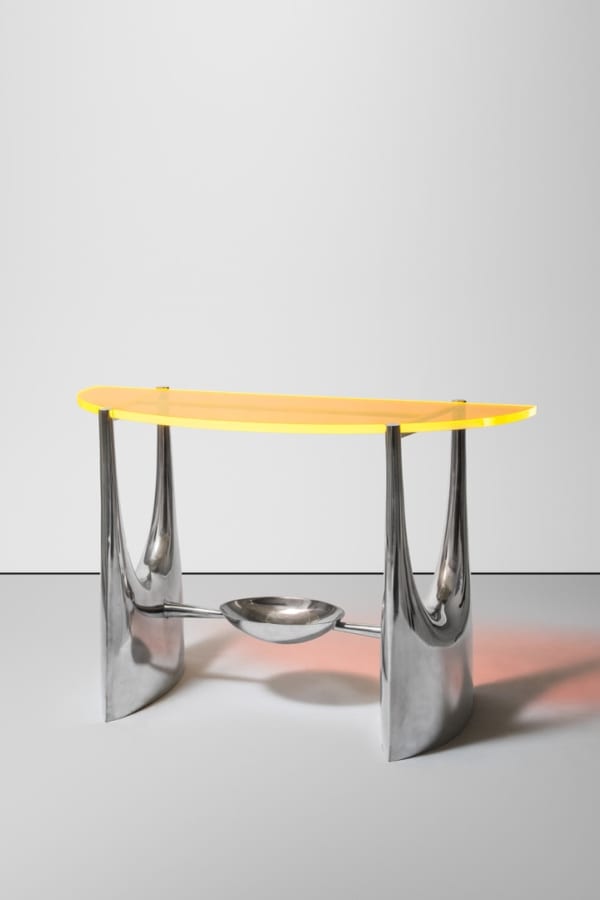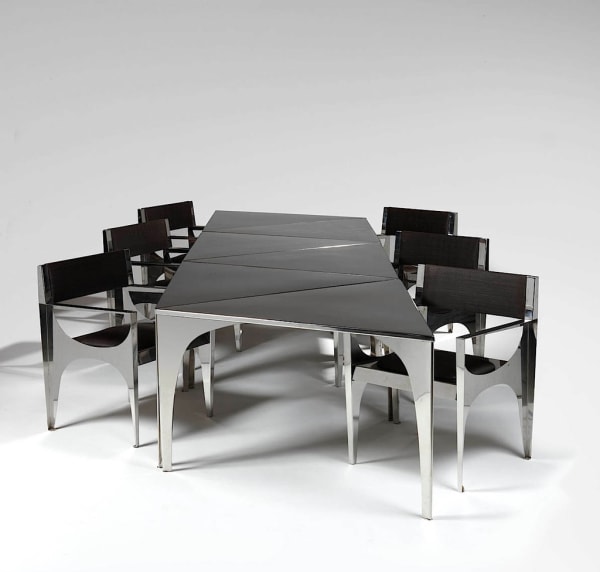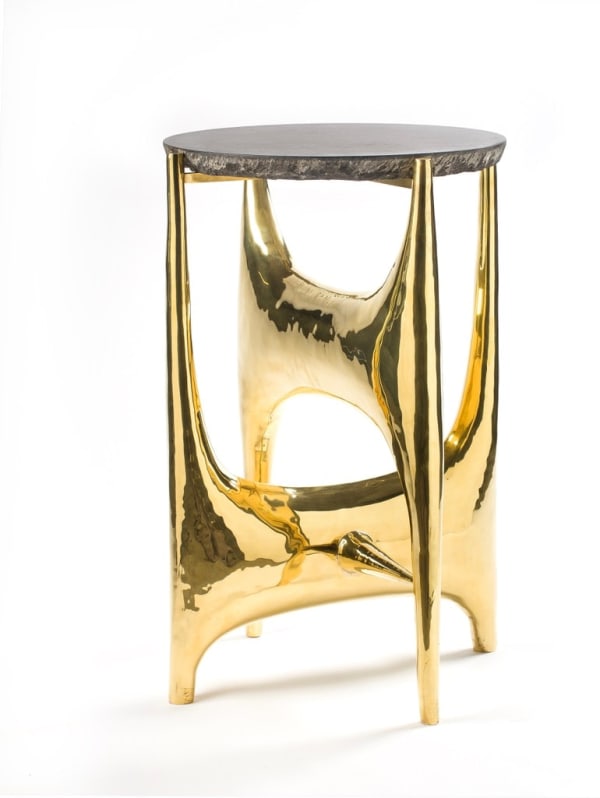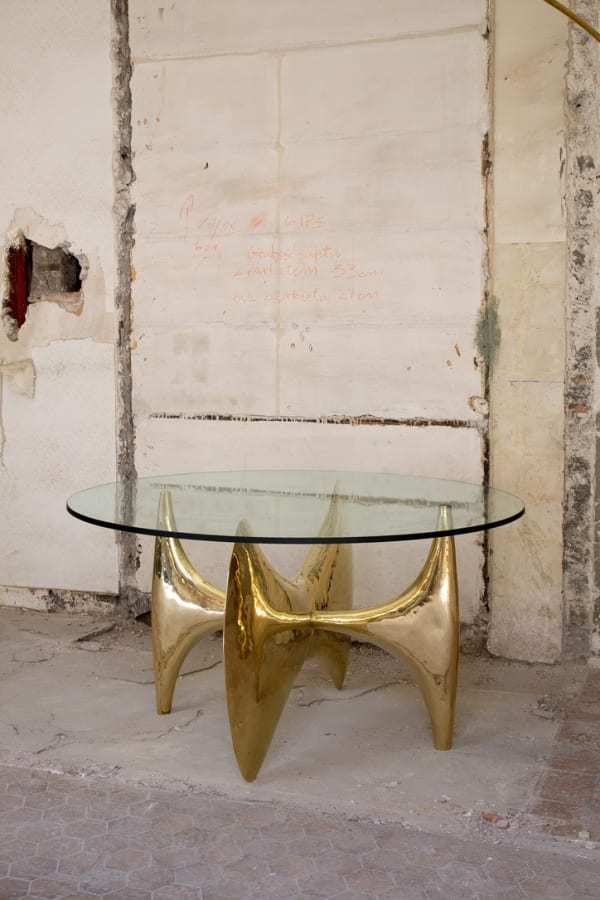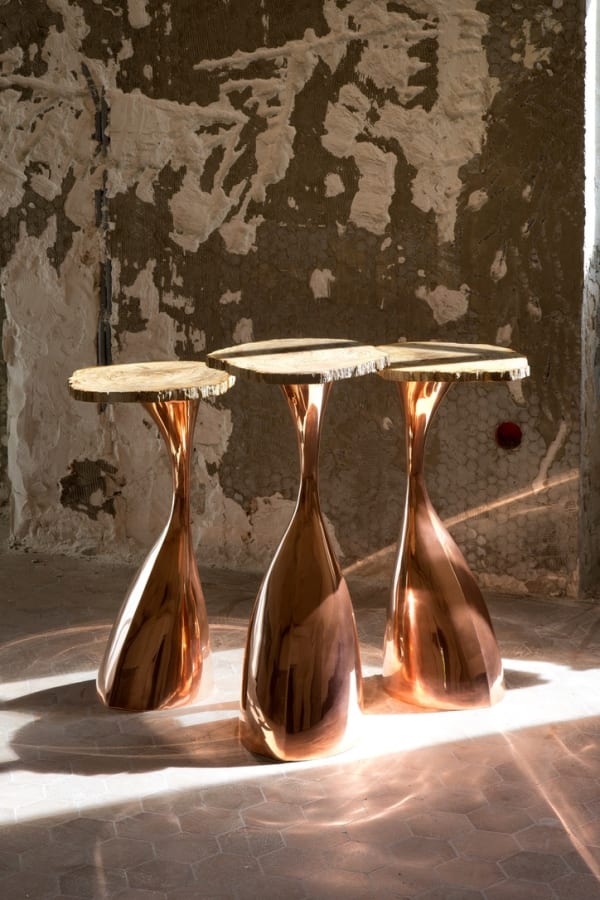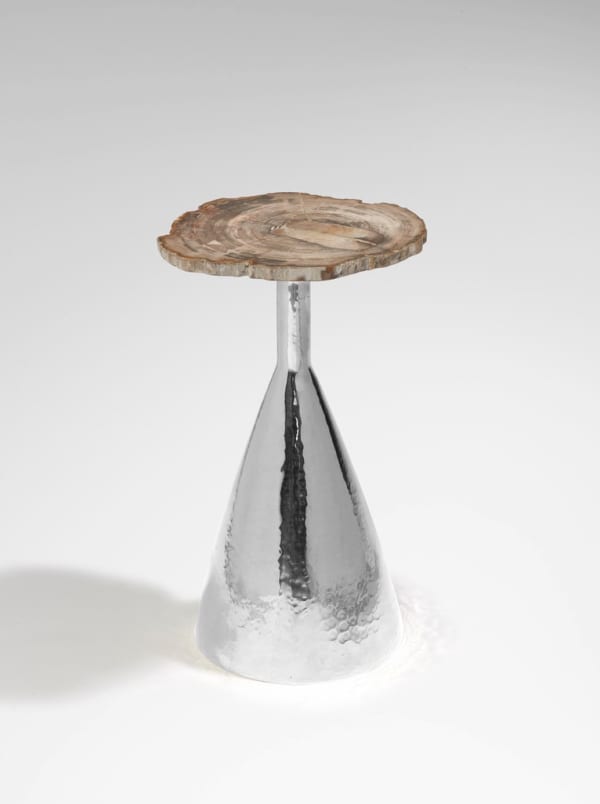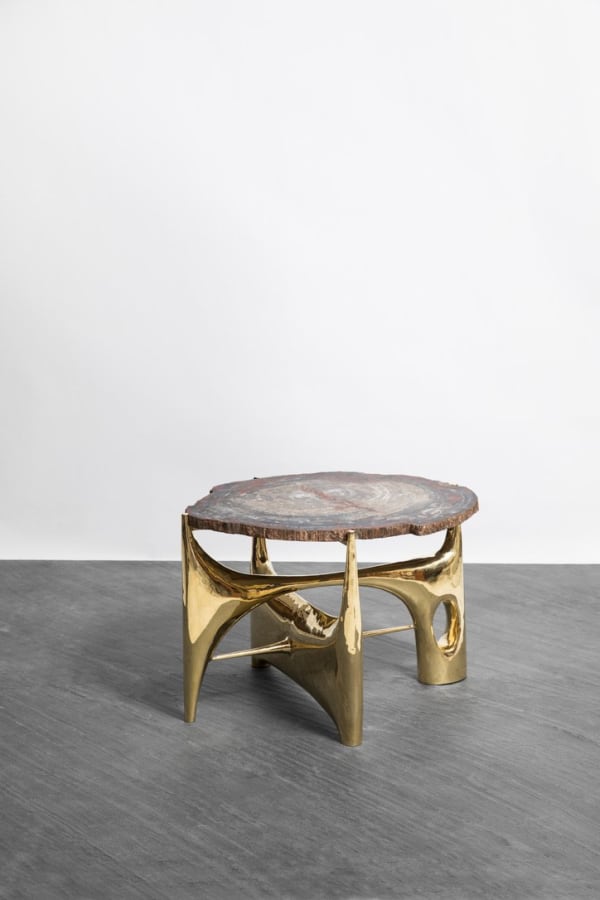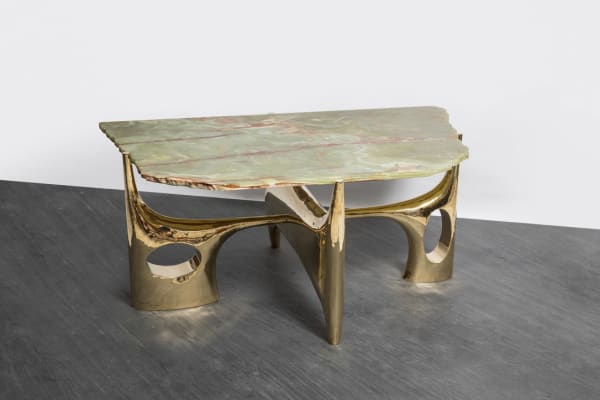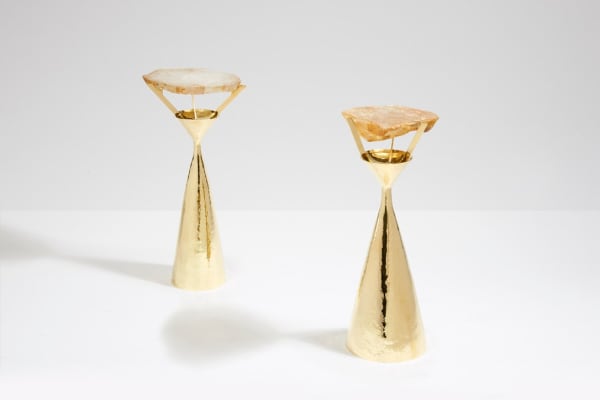Philippe Hiquily
Innovative Artistry from the Beginning
Born in Paris in 1925, Philippe Hiquily was the son of artists and showed a proclivity for artistic creation from a young age. Hiquily first studied at the École des Beaux-Arts in Orléans, France, before moving on to the École Supérieure des Beaux-Arts in Paris in 1945. It was during this period that he found himself in the studio of Gimond-Janniot, where he would meet and work alongside creators such as César, Robert Muller, and Albert Féraud.
Hiquily went on to open his own studio in 1953 in the 14th arrondissement of Paris. It was here that he would create his first independent works and develop his “direct metal” technique, working the metal from sheets. During this period, he frequented different sculptors' workshops, like those of Germaine Richier and Jean Tinguely. With strong influences from the Cubist and Surrealist movements, Hiquily spent most of his early career creating iron, brass, and aluminum sculptures in sensual and dreamlike forms. At the Paris Biennale in 1959, Hiquily won the Critic’s Prize for sculpture.
Bridging the Gap: From Sculpture to Furniture
As a connoisseur and admirer of Calder’s mobiles and Duchamp’s ready-mades, and with a penchant for primitive arts and surrealist experimentations, Hiquily was not predestined to be the furniture designer as he’s known today. Paradoxically, today, he owes much of his renown as one of the most acclaimed sculptors of the 20th century to his furniture.
In 1966, the preeminent interior designer Henri Samuel, an admirer of Hiquily’s sculptural work, commissioned Hiquily to create pieces of furniture for his most prestigious clients, including Marie-Laure de Noailles, the Van Zuylen family, Bobby Hass, Louise de Vilmorin, Jacqueline Delubac, and the Rothschild family. This marked the beginning of a long and successful collaboration between the two men from which came some of the most prolific creation of meubles-sculptures, or sculptural furniture, of the 20th century.
Erotism Moving into Decorative Arts
In the 1970s, Hiquily’s furniture began to take on themes from his personal world in which the role of women and erotism was paramount. This recurring motif, already prominent and recognizable in his sculptures, became an integral feature seamlessly transposed into his furniture. Hiquily’s ability to retain the true magic of his sculpture, even as he translated them into functional objects, remains one of his most distinctive and defining strengths.
Rather than considering his furniture as twisted versions of his sculptures, he managed to strike a delicate balance to create works that are both sculptural and functional. This harmony led to Hiquily’s development of a unique formal vocabulary with abstract and sensual shapes and volumes, which he would elegantly transpose into a wide variety of furniture pieces including tables, consoles, and lamps.
Philippe Hiquily's Continued Legacy
From Hiquily’s daring artistic spirit came a collection of sculptural furniture that remains one of the most unique and sought-after in interior design today. A reflection of one of his more influential relationships of the 20th century, in the early 2000s, Hiquily endowed a major collection of original and emblematic pieces to the Galerie Gastou.
Today, Hiquily’s work can be found in countless public and private collections around the world, including the MoMA and Guggenheim in New York, the Hirshhorn Museum in Washington DC, the Museum of Contemporary Art in Montreal, Canada, the Musée d'Art Moderne and the Centre Georges Pompidou in Paris, France, and the Museum of Contemporary Art in Havana, Cuba.
-
 Arched floor lamp, 2011See More
Arched floor lamp, 2011See More -
 Ashtray for cigars, 2009See More
Ashtray for cigars, 2009See More -
 "La Banquière", 1989See More
"La Banquière", 1989See More -
 1988 Console, 1988See More
1988 Console, 1988See More -
 Console, 1988See More
Console, 1988See More -
 "Gombert" console, 1980See More
"Gombert" console, 1980See More -
 "Coque" armchair, 1975See More
"Coque" armchair, 1975See More -
 “Quille” side table, 1974See More
“Quille” side table, 1974See More -
 "Quilles" side tablesSee More
"Quilles" side tablesSee More -
 "Coque" armchair, 1975See More
"Coque" armchair, 1975See More -
 "Jacqueline Delubac" coffee table, 1971See More
"Jacqueline Delubac" coffee table, 1971See More -
 Console, 1968See More
Console, 1968See More -
 Robert Hass modular table, c. 1967See More
Robert Hass modular table, c. 1967See More -
 "Robert Hass" armchairs, c. 1967See More
"Robert Hass" armchairs, c. 1967See More -
 "Nénuphar" standing lamp, 1985See More
"Nénuphar" standing lamp, 1985See More -
 "Marie-Laure de Noailles" side table, 1965See More
"Marie-Laure de Noailles" side table, 1965See More -
 "Malraux-Vilmorin" table, 1968See More
"Malraux-Vilmorin" table, 1968See More -
 Console - From the artist's collection, 1978See More
Console - From the artist's collection, 1978See More -
 Ceiling light, Contemporary editionSee More
Ceiling light, Contemporary editionSee More -
 Henri Samuel side tables, 1975See More
Henri Samuel side tables, 1975See More -
 "Polysex" armchairs, 1993See More
"Polysex" armchairs, 1993See More -
 1993 table, 1993See More
1993 table, 1993See More -
 1988 Console, 1988See More
1988 Console, 1988See More -
 "Monsieur et Madame" side table, 1977See More
"Monsieur et Madame" side table, 1977See More -
 Henri Samuel coffee table, 1966See More
Henri Samuel coffee table, 1966See More -
 "Anthropomorphe" standing lamp, 1993See More
"Anthropomorphe" standing lamp, 1993See More -
 "Monsieur et Madame" side table, 1977See More
"Monsieur et Madame" side table, 1977See More -
 Coffee table, c. 1970See More
Coffee table, c. 1970See More -
 "Anthropomorphe" standing lamp, 1993See More
"Anthropomorphe" standing lamp, 1993See More -
 Candelabra, c. 1970See More
Candelabra, c. 1970See More -
 Console - From the artist's collection, 1978See More
Console - From the artist's collection, 1978See More -
 "Quille" side tables, 1997See More
"Quille" side tables, 1997See More -
 "Henri Samuel" standing lamp, 1974See More
"Henri Samuel" standing lamp, 1974See More -
 Robert Hass folding chairs, c. 1967See More
Robert Hass folding chairs, c. 1967See More -
 Henri Samuel standing lamp, 1974See More
Henri Samuel standing lamp, 1974See More -
 "Nénuphar" standing lamp, 1985See More
"Nénuphar" standing lamp, 1985See More -
 "Cygne" lamp, small, 1985See More
"Cygne" lamp, small, 1985See More -
 "Cygne" lamp, small, 1985See More
"Cygne" lamp, small, 1985See More -
 "Cygne" lamp, large, 1985See More
"Cygne" lamp, large, 1985See More -
 "Cygne" lamp, large, 1985See More
"Cygne" lamp, large, 1985See More





